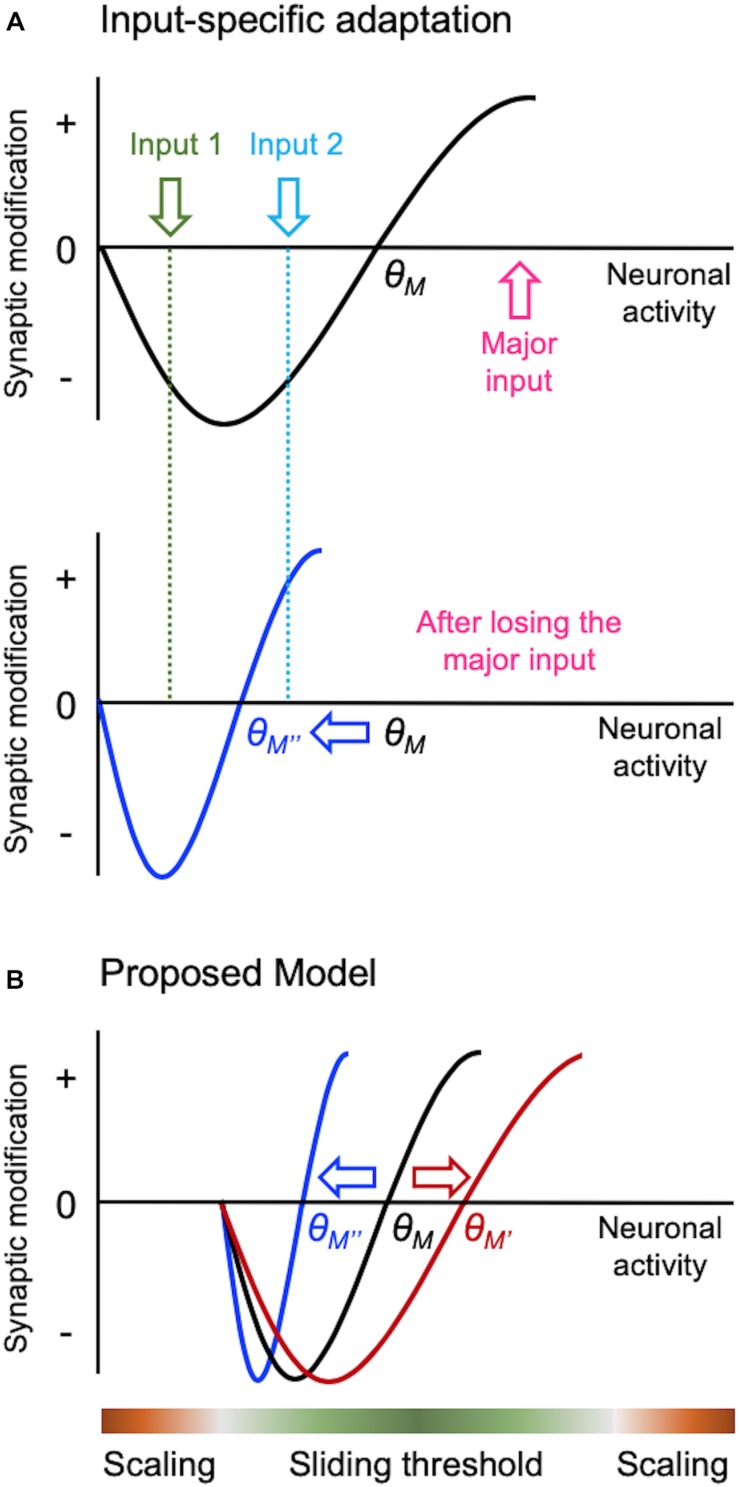FIGURE 2.
Input-specific homeostatic synaptic plasticity and distinct activity regime. There are specific considerations needed when implementing homeostatic regulation in intact circuits in vivo, such as a need to provide homeostasis in an input-specific manner. Sliding threshold model can easily accomplish input-specificity as depicted in panel (A). When overall activity of a neuron is reduced, such as due to loss of its major input, θM slides down. This causes previously weak Input 2 to cross the LTP threshold for synaptic potentiation, but leaves the less active input (Input 1) in the LTD range. Such input-specific adaptation allows the neuron to dynamically update its synaptic weights to process the most active input(s) in the context of its overall activity. We propose that sliding threshold and synaptic scaling operate across different activity regimes in vivo as shown in panel (B). Based on the advantage sliding threshold endows intact neural networks, such as always adapting to the most relevant inputs as shown in panel (A), we surmise that this is the dominant mode of homeostatic adaptation within most physiological range of activity. However, sliding threshold is less likely to be effect at providing homeostasis at extreme ranges of activity. For instance, when activity levels are too low, even if the θM slides, there will be insufficient activity to activate NMDARs to drive potentiation of synapses. We suggest that NMDAR-independent synaptic scaling will be more effective at providing homeostatic adaptation with inactivity. At the other extreme, synaptic scaling will be much more effective at dampening overactive circuits, because it can globally reduce the strength of synapses.

